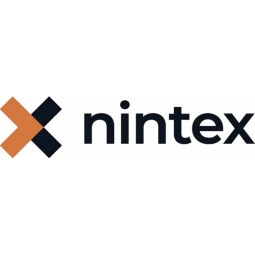Case Studies.
Add Case Study
Our Case Study database tracks 22,657 case studies in the global enterprise technology ecosystem.
Filters allow you to explore case studies quickly and efficiently.
Download Excel
Filters
-
(61)
- (36)
- (24)
- (2)
- View all
-
(50)
- (20)
- (18)
- (14)
- View all
-
(40)
- (15)
- (9)
- (6)
- View all
-
(37)
- (10)
- (8)
- (8)
- View all
-
(35)
- (31)
- (4)
- (1)
- View all
- View all 13 Technologies
- (52)
- (39)
- (35)
- (31)
- (24)
- View all 34 Industries
- (82)
- (46)
- (41)
- (38)
- (35)
- View all 9 Functional Areas
- (74)
- (59)
- (56)
- (52)
- (19)
- View all 58 Use Cases
- (109)
- (72)
- (40)
- (30)
- (3)
- View all 7 Services
- (246)
Selected Filters

|
McDonald’s New Zealand Streamlines HR Processes with IoT Solution
McDonald’s New Zealand, with its 152 restaurants across the country and approximately one million weekly visitors, faced a significant challenge in managing the human resources requirements of its 9,000 employees. The Auckland-based human resources (HR) team was tasked with providing HR support and guidance to individual franchisees and restaurant managers for a range of employment-focused procedures and protocols. The team needed to ensure consistency across different locations and keep up with changing legislation. The challenge was to find a solution that could simplify and streamline these processes, decrease reliance on the HR team, and increase employee confidence.
|
|
|

|
Port Stephens Council: Enhancing Process Management with IoT
Port Stephens Council, located in New South Wales, was facing challenges due to population growth, increasing development, and tourism. These factors were putting pressure on the environmental integrity, character, and attributes of the local government area. The council had adopted the Australian Business Excellence Framework (ABEF), a system designed to guide organizations to sustain high levels of performance. However, the council's existing Visio software was increasingly unable to support the scale required for ABEF. It also lacked a systematic approach to process management, making it difficult for teams to map, capture, and record both existing and new processes. The council needed a solution that could support their process management, improvement, and innovation needs.
|
|
|

|
Streamlining Healthcare Services with IoT: A Case Study of St John New Zealand
St John, the largest primary care provider in New Zealand, faced a significant challenge in consolidating four regional business units under a national umbrella. The organization provides a range of care-related community and commercial services, including medical alarms and an emergency telephone response service to at-risk individuals nationally through their Telecare and Home Health division. The Telecare division is responsible for installing thousands of medical alarms in the homes of clients with diverse medical needs across the country and monitoring these alarms through a 24-hour telephone service. The consolidation of business units was further complicated by an upcoming requirement for a significant segment of the healthcare industry to gain accreditation to become an approved government supplier, a process that necessitated an independent audit of processes.
|
|
|

|
SAI Global Achieves Process Standardization Across Global Offices with IoT
SAI Global, a global provider of information services and solutions for managing risk, achieving compliance, and driving business improvement, faced a significant challenge in managing process variations across its global offices. With a workforce of over 1,000 staff, spread across different technology platforms and locations, implementing a single, global process management system was a daunting task. The global nature of SAI Global's business meant that there was a considerable amount of variation in processes across its offices. This lack of standardization and consistency was a major hurdle in achieving operational efficiency and accountability.
|
|
|

|
Rinnai NZ's Continuous Improvement with Nintex Promapp
Rinnai NZ, a leading heating appliance manufacturer, was not facing any specific inefficiencies or issues. However, the company was always looking for ways to improve their products and business at every level. They wanted to maintain their global industry leadership by continually enhancing their processes. The company was also keen on ensuring their ISO 9001 compliance and making health, safety, and risk management an integral part of their day-to-day business. They wanted to make information easily accessible to all staff members, thereby reducing surprises and improving efficiency. Additionally, they wanted to streamline their auditing process and make staff onboarding faster and more efficient.
|
|
|

|
Ricoh Australia's Transformation through IoT
Ricoh Australia, a global technology company, had been experiencing significant growth due to acquisitions and expansion into new markets. This growth, however, led to a complex and disparate quality management system. The system, developed internally, had information stored in various places, leading to a lack of clear-cut ownership of processes. The company was also facing challenges in maintaining its commitment to quality and compliance requirements, including ISO 9001, ISO 14001, ISO 27001, and the CarbonZero environmental standard. To avoid problems with outdated or inaccurate processes, Ricoh needed a new tool that would enable them to impose dates for review of content and make process information accessible to all employees, including those working in the field.
|
|




